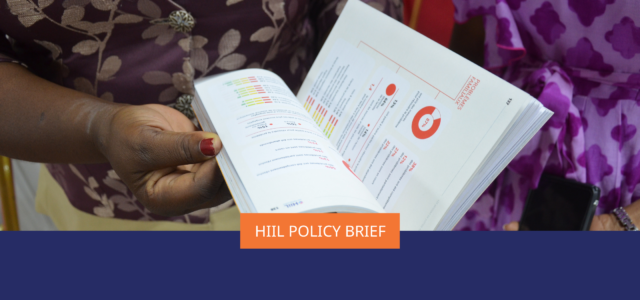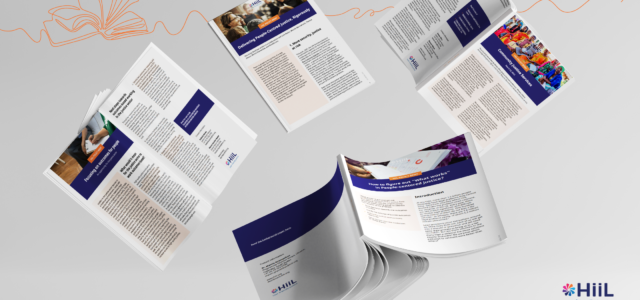
By Isabella Banks
The latest in a series of HiiL policy briefs exploring outcomes-based working in the justice sector, “Measuring the justice outcomes that survivors of intimate partner violence seek: An updated prototype” offers a practical tool designed to help practitioners deliver justice services that are truly people-centred in terms of the outcomes they deliver. The relationship between these three reports is explained here.
In a HiiL policy brief published last month, “How to figure out ‘What Works’ in people-centred justice,” Dr. Martin Gramatikov discusses the challenge of evidence-based working in the justice sector and calls for greater action on the part of researchers, policy-makers, and funders to address it.
HiiL’s Justice Needs and Satisfaction (JNS) surveys consistently show that a small percentage of the legal problems people experience are resolved fairly. Yet our tools for understanding why so many justice interventions fail – and what makes those that do not fail successful – are limited. Randomised controlled trials (RCTs) – often considered the golden standard for evaluating the effectiveness of interventions – are costly, require large sample sizes, and can be difficult to organise ethically in a justice environment. As a result, they are few and far between. And although the body of empirical legal research is growing, experimental research that makes possible reliable attribution of positive outcomes to particular interventions remains rare.
Dr. Gramatikov defines “what works” as interventions that alter the outcomes of justice journeys positively. At the same, he points out that there is little agreement about what is meant by justice “outcomes.” Because the vast majority of justice data available is administrative rather than people-centred, outcomes are often understood as case outcomes, such as case processing time or the number of convictions or settlements reached. Case outcomes reflect the processes and priorities of legal institutions but tell us little about the needs and goals of people seeking justice. Clarifying what we mean when we talk about justice outcomes is at the top of the research agenda Dr. Gramatikov sets out for identifying “what works” to prevent and resolve people’s most pressing legal problems.
In a policy brief published last year, “Focusing on outcomes for people,” Manon Huchet-Bodet and I took up this challenge and made a case for a new kind of outcomes-based working in the justice sector. We defined a people-centred justice outcome as “a positive result or change in well-being that a person with a legal problem achieves through the resolution process.” Beginning with a focus on a particularly intractable legal problem – intimate partner violence (IPV) – we carried out qualitative research that identified 21 outcomes that survivors of IPV across three different counties typically seek.
Our next challenge was to understand how progress towards these 21 survivor-centred outcomes could be measured. We consulted eight experts in empirical legal research, restorative justice, and outcomes measurement to find out. In a follow-up study published today, “Measuring the outcomes that survivors of intimate partner violence seek: An updated prototype,” we integrated their advice to develop a survivor-centred outcomes measurement tool.
This tool provides an example of what outcomes-based working in the justice sector can look like. It can be used by practitioners to more holistically understand the kind of help that IPV survivors need, and assess to what extent the help they provide (whether in the form of an intervention or a referral) “works” in the sense of delivering the outcomes that a given client has identified as most important. It also empowers IPV survivors to make their voices heard in the resolution process, and provides new insight into the justice outcomes that IPV survivors seek and achieve.
If over time, justice practitioners begin working across disciplines to achieve a shared set of outcomes for IPV survivors in their community, we believe that a more responsive, holistic, and effective justice system will begin to emerge. Shifting our focus from what the current justice system can provide to the kind of help people really need can eventually make way for legal and regulatory changes that more fundamentally transform and integrate the way we deliver justice services.





